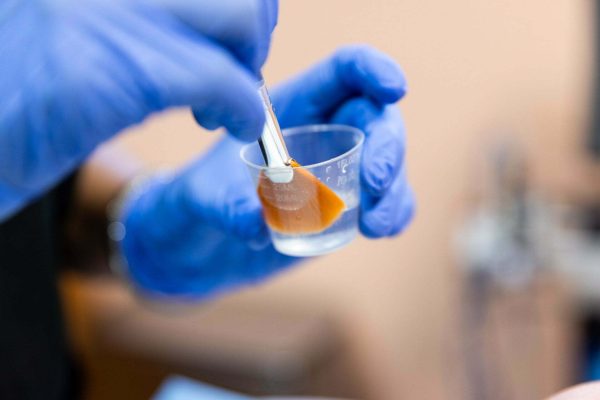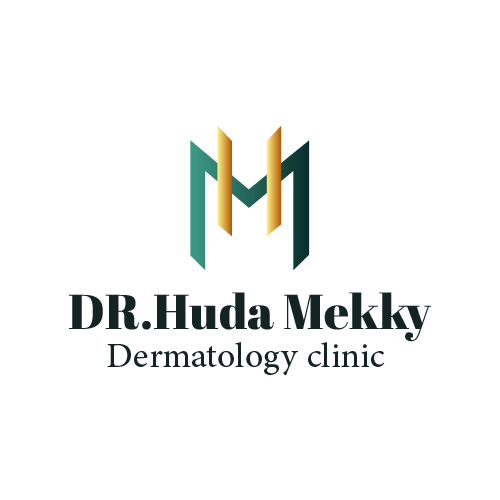Chemical Peel

- A chemical peel is a treatment and cosmetic procedure used to improve the appearance of the skin by applying a chemical solution that exfoliates the outer layers. This process helps to treat various skin issues, such as acne, fine lines, wrinkles, hyperpigmentation, and uneven skin texture. Chemical peels can range from superficial to deep, depending on the strength of the chemicals used and the desired outcome. Chemical peels are a versatile and effective cosmetic treatment for a variety of skin concerns, from acne and pigmentation to wrinkles and sun damage. They range from mild superficial peels with minimal downtime to deep peels with more significant results and recovery time. A consultation with a dermatologist consultant is essential to determine the best type of peel for your specific skin needs and goals.
Types of Chemical Peels
Superficial Peels:
- What They Are: These are the mildest type of chemical peels, often referred to as “lunchtime peels” because of their minimal downtime.
- Common Ingredients: Alpha-hydroxy acids (AHAs) like glycolic acid, lactic acid, and salicylic acid.
- Uses: Superficial peels are typically used to improve mild discoloration, refresh the skin, and treat rough texture or dryness. They can also help manage acne.
- Recovery: Minimal downtime, with slight redness or flaking for a few days.
Medium Peels:
- What They Are: Medium-depth peels penetrate more deeply into the skin and are used for more pronounced skin issues.
- Common Ingredients: Trichloroacetic acid (TCA) is a common ingredient used in medium peels.
- Uses: These peels are effective for treating moderate wrinkles, sun damage, and pigmentation issues like melasma or age spots.
- Recovery: Moderate downtime, with redness, swelling, and peeling for about a week.
Deep Peels:
- What They Are: Deep peels penetrate the deepest layers of the skin and provide the most dramatic results.
- Common Ingredients: Phenol or high-strength TCA.
- Uses: Deep peels are used for severe wrinkles, deep scars, and significant sun damage.
- Recovery: Significant downtime, with redness, swelling, and peeling that can last several weeks. Deep peels often require anesthesia and are typically performed in a medical setting.
How Chemical Peels Work
Application: During a chemical peel, the chosen solution is applied to the skin. The chemicals work to break down the bonds between the outermost layers of skin cells, causing the skin to exfoliate and eventually peel off.
Exfoliation: The exfoliation process removes damaged skin cells, revealing new, healthier skin underneath. This process also stimulates the production of new collagen, which can improve skin texture and firmness.
Healing: As the skin heals from the peel, it becomes smoother, more even-toned, and more youthful-looking.
Benefits of Chemical Peels
- Improved Skin Texture: Chemical peels can smooth rough skin and reduce the appearance of fine lines and wrinkles.
- Even Skin Tone: They are effective in reducing hyperpigmentation, sun spots, and acne scars, resulting in a more even skin tone.
- Acne Treatment: Superficial peels can help unclog pores, reduce acne, and diminish the appearance of acne scars.
- Enhanced Skin Radiance: By removing dead skin cells, chemical peels can give the skin a fresh, radiant glow.
Procedure and Recovery
Preparation:
- Consultation: A dermatologist or licensed aesthetician will evaluate your skin type and concerns to determine the most appropriate peel.
- Pre-Treatment Care: You may be advised to avoid sun exposure, stop using certain skincare products, and prepare your skin with specific treatments before the peel.
- Proper post-treatment care and sun protection are crucial to maintaining the results and avoiding complications.
During the Procedure:
- Application: The chemical solution is applied to the skin and left on for a specific amount of time, depending on the type and strength of the peel.
- Sensation: You may experience a tingling, burning, or stinging sensation during the procedure.
Post-Treatment Care:
- Superficial Peels: Minimal recovery time, with potential redness or flaking for a few days.
- Medium Peels: Expect peeling and redness for about a week; it’s important to keep the skin moisturized and avoid picking at peeling skin.
- Deep Peels: Extended recovery with significant peeling, redness, and swelling; strict post-care instructions, including avoiding sun exposure, are crucial.
Considerations
- Skin Type: Not all chemical peels are suitable for every skin type. Deeper peels carry a higher risk of hyperpigmentation, particularly for those with darker skin tones.
- Side Effects: Possible side effects include redness, peeling, swelling, changes in skin color, and, in rare cases, scarring or infection.
- Frequency: Superficial peels can be repeated more frequently, while medium and deep peels require more extended periods between treatments due to their intensity.
Chemical Peel and Melasma – Clinic Challenge:
- Consultation: A thorough consultation with a dermatologist is essential to assess the severity of your melasma and choose the most appropriate peel. Your skin type, history of pigmentation issues, and sensitivity will be considered.
- Pre-Treatment Care: You may be advised to use a gentle skincare regimen, including sunscreen and products that inhibit melanin production, for several weeks before the peel.
Chemical Peel and Scars – Clinic Challenge:
Chemical peels can be used to improve the appearance of scars, including those caused by acne, burns and wounds, though their effectiveness depends on the type, depth, and age of the scars. Here’s how chemical peels work for treating scars and what to consider:
How Chemical Peels Work for Scars
Exfoliation and Skin Renewal:
- Process: Chemical peels exfoliate the outer layers of the skin, removing damaged cells and stimulating the growth of new skin. This can help reduce the appearance of scars by softening their edges, improving skin texture, and promoting a more even skin tone.
- Collagen Stimulation: Some chemical peels also promote collagen production in the deeper layers of the skin, which can help fill in and smooth out depressed scars, such as those caused by acne or wounds.
Types of Scars Treated:
- Superficial Scars: Light chemical peels can help fade superficial scars, such as minor acne scars or discoloration left after a wound has healed.
- Moderate Scars: Medium-depth peels are more effective for treating moderate scars, including some burn scars and more pronounced wound scars.
- Deep Scars: While chemical peels can improve the appearance of deep scars, they are less effective on very deep or raised scars (hypertrophic or keloid scars), where other treatments like laser therapy, microneedling, or surgical options may be more appropriate.
Types of Chemical Peels for Scars
Superficial Peels:
- Ingredients: Commonly use alpha-hydroxy acids (AHAs) like glycolic acid or lactic acid, and beta-hydroxy acids (BHAs) like salicylic acid.
- Effectiveness: These peels are suitable for treating superficial scars, such as mild acne scars and minor discoloration. They have minimal downtime and are gentle on the skin.
Medium Peels:
- Ingredients: Often use trichloroacetic acid (TCA) or a combination of TCA with other agents.
- Effectiveness: Medium peels penetrate deeper and are more effective for treating moderate scars, including some burn scars. They can also help with uneven skin texture and pigmentation associated with scars.
Deep Peels:
- Ingredients: Typically use phenol or high-concentration TCA.
- Effectiveness: Deep peels provide the most dramatic results but come with significant downtime and higher risks. They can improve the appearance of deeper scars but are generally not the first line of treatment due to their intensity.
Benefits of Chemical Peels for Scars
- Smoother Skin Texture: By exfoliating the damaged skin layers, chemical peels can smooth the skin’s surface, making scars less noticeable.
- Improved Pigmentation: Peels can reduce hyperpigmentation or discoloration around scars, blending them more seamlessly with the surrounding skin.
- Collagen Boost: Peels that penetrate deeper can stimulate collagen production, which helps to plump and smooth out indented scars.
Considerations for Scars
- Multiple Sessions: Scars often require multiple chemical peel sessions for noticeable improvement, particularly if the scars are deep or extensive.
- Maintenance: Even after initial improvement, ongoing skincare and occasional maintenance peels may be needed to maintain results, especially for scars that tend to darken with sun exposure.
- Dermatologist determines the most appropriate treatment plan tailored to your specific case. This plan may include Fractional Laser, scar subcision, Mesotherapy, Systemic treatment and topical treatment. Early intervention can often improve the effectiveness of treatments.
